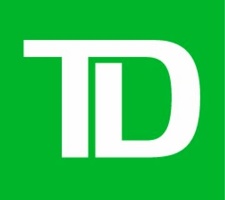@TDAM_Canada
Investor Knowledge + 5 Minutes = Current Insights
With a notable surge in market uncertainty and signs of slowing global growth, some investors may be questioning whether now may be a good time to reduce risk in their portfolio. Let's be honest - no investor wants to lose money. So, what strategies can we put in place to help protect our capital?
One option of course may be to go to cash. However, if you sell your investments and reallocate to cash, you cement any losses you may currently have while leaving yourself out of a potential recovery. A second (and much more balanced option) may be to play some defense within your equity allocation. This can be achieved by investing a portion in low volatility equity Exchange-Traded Funds (ETFs) that are designed to help reduce volatility while staying invested.
What is low volatility investing?
Low volatility investing seeks to capitalize on a fundamental mispricing of risk in equity markets. It involves choosing and including a diversified selection of stocks based on the risk level that the stock contributes to the portfolio as a whole; based on the empirical evidence that the least volatile group of stocks would produce equal to or better returns than the broad market over longer periods, most of the time1.
In other words, riskier stocks (think growth stocks) tend not to deliver higher returns than less risky stocks (utilities, consumer staples for instance) over many years. This is commonly referred to as the 'low volatility anomaly' as it runs counterintuitive to the traditional thinking about risk and return and is what low volatility investing is all about.
So, why take on additional risk if it is seldom rewarded?
Higher volatility equities have not generated higher returns than less volatile equities over the long run. By delivering returns competitive with equity markets, low volatility investing allows investors to increase their exposure to equities and reduce the drag of bonds in their portfolios, yielding a similar risk profile to a traditional balanced portfolio of stocks and bonds yet with a greater return potential.
The reality is that risk has not been rewarded over full market cycles. In fact, in falling markets, less volatile equities tend to outperform their more volatile counterparts. Plus, is it ever really a bad time to reduce portfolio risk? In short, low volatility investing can help lead to less 'investment statement shock', while helping you stay the course by staying invested.
What might investors expect from TD Low Volatility ETFs?
Investors may expect equity market returns with less risk. Historically, these strategies have produced better risk-adjusted returns—over a full cycle of course, as there will be periods of underperformance and outperformance. Low volatility investing can dampen both the highs and the lows of returns, which means less severe ups and downs relative to the broad market. Within portfolios, this tends to mean overweight positions in utilities, communication services, consumer staples, health care, utilities and underweight positions in technology, consumer discretionary and energy.
Investors can use TD Low Volatility ETFs to help dampen overall portfolio volatility across geographical locations. TD Q Canadian Low Volatility ETF (TCLV) for Canadian equity exposure, TD Q U.S. Low Volatility ETF (TULV) for U.S. equity exposure and TD Q International Low Volatility ETF (TILV) for international equity exposure.
Extra defense doesn’t mean zero risk.
Let's be clear, low volatility ETFs don't eliminate investment risk altogether or prevent losses during a market downturn, but they can help protect against drawdowns. Volatility can erode returns. Remember, a loss of 50% means that one needs a 100% return to get back to even. Less downside helps one recoup losses more quickly. So, don't overlook low volatility investing, especially when it can help you rest easy at night.
1Bodjov, Yuriy and Lempriere, Isaac (2015), A Review of the Historical Return-Volatility Relationship, TD Asset Management Inc. The information contained herein has been provided by TD Asset Management Inc. and is for information purposes only. The information has been drawn from sources believed to be reliable. The information does not provide financial, legal, tax or investment advice. Particular investment, tax, or trading strategies should be evaluated relative to each individual’s objectives and risk tolerance.
Commissions, management fees and expenses all may be associated with investments in exchange traded funds (ETFs). Please read the prospectus and ETF Facts before investing. ETFs are not guaranteed, their values change frequently, and past performance may not be repeated. ETF units are bought and sold at market price on a stock exchange and brokerage commissions will reduce returns..
Certain statements in this document may contain forward-looking statements (“FLS”) that are predictive in nature and may include words such as “expects”, “anticipates”, “intends”, “believes”, “estimates” and similar forward-looking expressions or negative versions thereof. FLS are based on current expectations and projections about future general economic, political and relevant market factors, such as interest and foreign exchange rates, equity and capital markets, the general business environment, assuming no changes to tax or other laws or government regulation or catastrophic events. Expectations and projections about future events are inherently subject to risks and uncertainties, which may be unforeseeable. Such expectations and projections may be incorrect in the future. FLS are not guarantees of future performance. Actual events could differ materially from those expressed or implied in any FLS. A number of important factors including those factors set out above can contribute to these digressions. You should avoid placing any reliance on FLS.
TD ETFs are managed by TD Asset Management Inc., a wholly-owned subsidiary of The Toronto- Dominion Bank.
TD Asset Management Inc. is a wholly-owned subsidiary of The Toronto-Dominion Bank.
®The TD logo and other TD trademarks are the property of The Toronto-Dominion Bank or its subsidiaries.
 Canada
Canada

